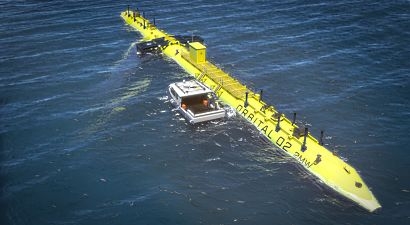
Orbital Marine Power was formerly known as Scotrenewables Tidal Power before the company was rebranded in October. The Orbital O2 will comprise of a 73 metre long floating superstructure, supporting two 1 MW turbines at either side for a nameplate power output of 2 MW, at a tidal current speed of 2.5 m/s. With rotor diameters of 20 metres, it will have a 600 square metre rotor area, the largest ever on a single tidal generating platform to date. Orbital Marine believes that, when launched in 2020, it will be the most powerful tidal generating platform in the world.
“The Orbital O2 is a low cost solution for future commercial projects and builds on the features which made the SR2000 an industry breakthrough” said Andrew Scott, CEO of Orbital Marine Power. “This optimised turbine will unlock tidal markets around the world at a competitive price point and provide regulators and investors with a new, predictable renewable energy option.”
The first production unit will be funded with support from a live public debenture offer through the Abundance Investment platform (announced 16th October), along with the European Horizon2020 and Interreg North West Europe innovation programmes. The debenture offer has already raised close to 50 percent of its £7 million target.
The Orbital O2 has been designed for low cost access to all systems and components, the vast majority of which are located within the floating superstructure for simple onsite maintenance as per the SR2000. The machine will also feature new ‘gull wing’ style retractable legs that raise the nacelles, pitch hubs and blades to the water surface for easy access without the need for any specialist heavy lift vessels.
The steel structure of the turbine has been simplified to reduce fabrication costs and futureproof the product for volume manufacturing. The new configuration also reduces the draught of the unit to less than 3m to ensure this utility scale machine can be towed and installed with modest sized workboats.
For the first time, Orbital Marine Power’s system will feature 360 degree blade pitching control. This will allow safe, dynamic control of the machine’s 20m rotors and will enable power to be captured from both tidal directions without need to yaw the entire platform. These controllers will support the installation of even larger blades in the future.
For additional information:

